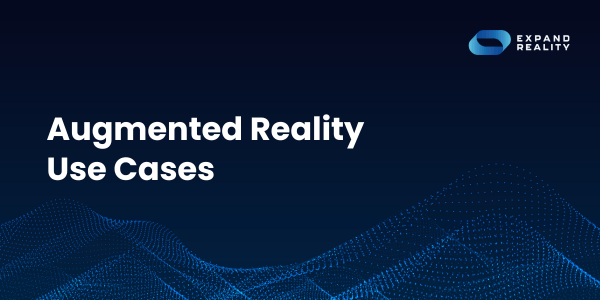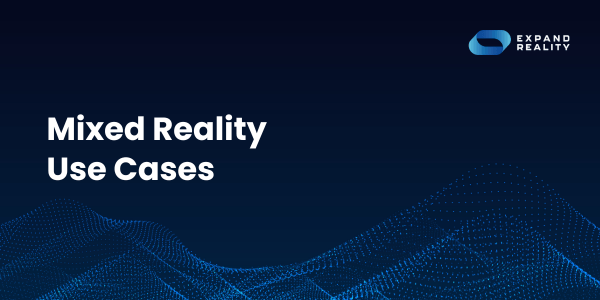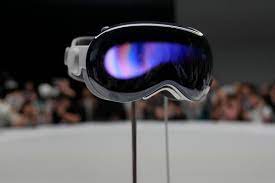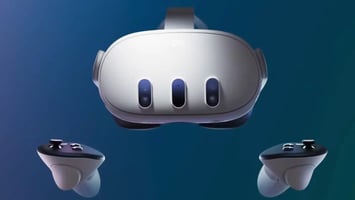Meta's latest move to train its AI tools on EU user data marks a significant shift in the landscape...
Metaverse - the hardware solutions explained
.png?width=800&height=450&name=Vuzix%20FAQ%E2%80%99s%20(9).png)
There are four types of metaverse hardware.
Its important to understand the difference as you get a very different experience.
.png?width=600&height=600&name=XR%20Table%20(1).png)
What is Augmented Reality?
This is the Enterprise version with every bell and whistle, that hosts powerful software for resolving enterprise issues often in 3D. We will explain how this allows you to see digital images overlaid on the real world and why that is key. See the educational instances in Industrial, Medical and Educational uses cases here.
The Meta Quest 3 and similar devices represent a significant leap forward in augmented reality (AR) and metaverse technology, offering users the ability to view and interact with substantial digital information overlaid on the real world. These advancements are crucial as the hardware becomes lighter, making it feasible for all-day use without compromising comfort. This enhanced portability is complemented by robust computing power, which is capable of processing complex software and delivering immersive experiences across both physical and virtual worlds.
As metaverse expansion continues to accelerate, these devices are at the forefront of integrating augmented reality with virtual environments. They facilitate seamless interaction between physical and virtual spaces, enabling users to engage with digital content in ways that blur the lines between the two realms. This capability is particularly valuable for AR work, where real-world tasks can be augmented with virtual elements, enhancing productivity and creativity.
The technology powering the Meta Quest 3 and similar devices is designed to support sophisticated metaverse experiences, including dynamic virtual worlds and interactive environments. This innovation paves the way for future developments in the metaverse, where the integration of AR and virtual reality will become increasingly seamless, offering users richer and more engaging experiences.
In summary, the Meta Quest 3 embodies the cutting-edge of metaverse and augmented reality technology. Its lightweight design and powerful computing capabilities enable users to interact with extensive digital information overlaid on the real world, making it an essential tool for both current and future applications in the metaverse. As these technologies continue to evolve, they promise to redefine how we experience and interact with both physical and virtual worlds.
Magic Leap Download Centre - Case Studies, Use Cases and Insightful videos
HoloLens Download Centre - Case Studies, Use Cases and insightful videos
High Level Comparison information:-
Magic Leap 2 V HoloLens 2 Top level headline comparison
These devices cost between £3-4000 each and therefore the return on investment gains have to be significant. However you will see from the case studies and use cases that 10X productivity gains and 5.7X Returns on Investment are common. Case Studies and Comparisons
Use Case Examples would be in Industrial, Engineering, Design, Medical, Healthcare where complex issues are being dealt with:
In a Handsfree way, Like Lockheed Martin on the Orion spacecraft cutting the time to place 57,000 rivets in the machines hull, by 90%. Completing what did take eight , 8-hour shifts in just 6 hours! Without any mistakes!
In 3D, like the Neurosurgery example where CAT scans and MRI's are turned into 3D so surgeons, can pre plan the operation and. show the patient, family, colleagues exactly what they are tackling and how they will overcome any likely bumps in the road.
What is Assisted Reality?
In the realm of augmented reality (AR) and metaverse technology, enterprise use cases and high-specification consumer applications span a broad range of requirements and capabilities. At the top end of the spectrum, enterprise solutions leverage advanced AR technology to deliver complex, interactive digital overlays that enhance professional tasks and industrial applications. These high-end devices often provide a comprehensive digital image within smart glass lenses or display information visible to one eye only, catering to specialised use cases that demand significant computational power and integration with existing systems.
Conversely, high-specification consumer devices offer a more accessible entry point into augmented reality and metaverse experiences. These devices are designed to cater to various consumer needs, from immersive entertainment to interactive learning experiences. They typically present digital information overlaid on the real world, enhancing the user's interaction with both physical and virtual environments.
Leading players in the AR and metaverse market include:
-
Vuzix: Known for its advanced smart glasses and AR solutions, Vuzix focuses on delivering enterprise-grade functionality and high-quality visual experiences.
-
Realwear: Specialising in wearable AR devices, Realwear provides robust solutions designed for industrial and field use, offering hands-free access to digital information and applications.
These devices are positioned in the $800 to $2,000 price range, making them more affordable compared to high-end consumer or enterprise solutions. They are particularly suited for simpler use cases that require supplementary information, such as hands-free access to data or real-time guidance in various operational contexts.
As the technology continues to evolve, the integration of AR and metaverse capabilities is expected to enhance how users interact with both physical and virtual worlds. Future developments will likely include advanced 3D models and immersive metaverse projects that further bridge the gap between reality and the digital universe, expanding the potential applications and experiences within the metaverse.
What are the Assisted Reality Hardware Use Cases?
Examples being:-
- Picking in Logistics warehouses - where handsfree picking can be achieved realising 20-25% time savings.
- See what I see field audits where a remote expert is seeing the wearers view is another use case that has delivered 10X productivity gains. This requires collaboration software that lets a user bring in colleagues on enterprise tools like Microsoft Teams.
- Medical remote expert is another use case, where a central expert can arrive and see what the surgeon or medical "in field" person is seeing. Again access the glasses and collaborating on Microsoft Teams or Google Meet is a key requirement, so that the expert and end user are using Enterprise collaboration tools, that they are used to. See Simply Video's powershell that enables Vuzix smart glasses to join Teams.
The SimplyVideo XRConnect product is here
What is Mixed Reality Hardware?

The best example is the MetaQuest device range as seen above. These hardware options show you an image of the real world that is being collected from cameras on the front surface of the smart glasses. Distance perception here is the issue and any uses cases that require distance perception, these options should be ruled out.
The price point for these type of devices is $£400 and as of January the devices come with Microsoft software, as a result of the new partnership. That makes MetaQuest for Work a real option, and that's been underlined by Accenture buying 65,000 MetaQuest headsets loaded with Meta for Work.
Meta are making a much simpler play for volume, targeting Microsoft's installed Enterprise software customer base. As a market that is huge and the proposition simple, why always look at a PC or Mobile device when you can have your own very personal head located display?
As work display tools these Mixed Reality devices are great for concentration and focus,however they come with Microsoft Teams, so as collaboration devices they are superb options.
Potentially they also address the post Covid Era of a disconnected workforce, working from home or in 2D on Teams, Zoom or Google Meet. Read The Meta and Mesh Blog here that highlights how Microsoft's new 3D Mesh software and Meta could address some very real collaboration issues.
What are Virtual Reality headsets?

Apple's VisionPro is the market leader here, on the opening pre-order weekend they took 300,000 orders and in one weekend doubled the size of the Metaverse Hardware Market. At $3000 plus these immersive smart goggles are not cheap, however software wise they come with Apple's software and continuity approach which means I can put down the Ipad and there in my VisionPro is the last thing I was working on.
Ideal for gaming, your completely immersed in your world inside the smart goggles, unable to see the real world, just the game, so concentration and focus are key elements that are delivered.
All of these options make up the hardware market and we'll explain and bring them to life in the following section.
.png?width=600&height=338&name=Magic%20Leap%202%20V%20HoloLens%202%20(5).png)
Augmented Reality - hardware leaders
This is dominated by two key players - Microsoft with the HoloLens 2 and Magic Leap with their Magic Leap 2.
Magic Leap are the dominant technical player given they have been working on the technology since 2010, however where there hardware is extremely advanced the software that runs on it is still at mid maturity i,.e perfect for some use cases and not for others.
Microsoft's HoloLens on the other hand is technically inferior in a number of areas, however their software with Windows 11 , Microsoft Office, Dynamics is more advanced as you would expect. Microsoft laid off their HoloLens Support and technical team in January 2023 so whilst demand is strong, their commitment is being questioned by the market. There recent partnership with Meta on the Meta for work software, providing the entire Microsoft suite means some industry commentators question the hardware drive that Microsoft has in this space.
Both solutions allow you to see the real world and a digital overlay so they are powerful options , here are some resources that explain the two offerings further:
Microsoft HoloLens 2 v Magic Leap 2 - Blog 5 powerful differences

What are the typical Augmented Reality use cases?
The simple answers have one very real caveat, that the board rooms of the industrial countries are not yet aware of the economic returns from these devices yet, hence the hardware market is dominated by Gaming and consumers and worth only $2.32bn.
However, when "they get it", and the forecasts say that's by 2027, the Hardware market will be worth $35.2bn. That's a 15X increase in 4 years.
.png?width=500&height=500&name=Metaverse%20Hardwear%20(2).png)
Why do we think that Enterprise demand will dominate that space?
The answer lies in the pioneer use cases and their results, see below:-
-1.png?width=600&height=300&name=Lockheed%20Martin%20Stat%20(1024%20x%20512%20px)-1.png)
If Lockheed Martin can achieve 10X productivity gains using HoloLens on the Orion Space Rocket that's productivity gains every boardroom should sit up and take note of.
If PBC Linear can pay for a $3,368 Magic Leap device with the training savings on just one new recruit 5.7 times over, then that's huge. What's more, who isn't going to sign off an investment that pays back in 6 weeks?
The fact that the training was shortened to 1 day, and the payback period 1 day, then those kind of results have to resonate in every US Industrial boardroom, where they have 348,000+ machinists.
.png?width=600&height=300&name=PBC%20Linear%20Stat%20(1024%20x%20512%20px).png)
If You take their $19,200 savings per new trainee machinist and apply that to the 348,000 machinists in the US, when they come to retirement or role change, then thats a $6bn saving.
So in these two examples we have:-
Industrial use cases - efficiencies of 10X in productivity and ROI figures of 5.7X in a day.
Now let's look at the Medical use case, we have picked just two and there are numerous examples. The first one is fast diagnosis of eye disease where Heru have developed software that sits on a Magic Leap that detects eye disease and disorders.
When is Augmented Reality hardwares "Tipping Point?"
So what is the business case for fast stroke, eye disease detection of millions of patients, just in the USA?
Here lies the contrast and the signal we are still early, in the adoption phase.
Whether it's Shelley Petersen at Lockheed Martin, Tim Le Crone at PBC Linear or Dr Shousha at the Bascom Palmer Eye Institute or Neurosurgeon Kia Shahlaie at UC Davis, there is a common thread here.
The individuals are solving their problem in "their area", NOT a boardroom solving the entire companies productivity problem.
So, between now and 2027 will come a tipping point, where the use cases move from being high impact low scale solutions in divisions or parts of companies, to high impact scale adoption.
The signals are already there:-
- Magic Leap Investment $590m - January 2024
- Microsoft Partners with Meta - January 2024
- Apple Launching the VisionPro - January 2024
We know that when Facebook/Meta, Microsoft, Apple and Magic Leap's investors all say in 2024, we have launched or increased investment that tipping point for Augmented reality is close.
Software will tip the Hardware growth curve North and accelerate it.
One thing that will tip usage is software and APPs, like Apple realised the power of an APP eco-system, that tailored every Iphone and Ipad to each users tastes.
The same is true for Augmented Reality hardware, the APPs will proliferate and enable the Enterprise use cases to flourish. We are devoting a whole section on Software and Use cases, however, one thing has surprised us at Expanded Reality and that is the collaboration and remote expert or see what I see use cases.
The big enabler here is collaboration software, the likes of Zoom, Teams and Google Meet. However you can join Augmented Reality devices today, on Teams and Google Meet easily. Here is how easy it is in a crude video.
The blog explaining it is here.
Part of the Tipping point has begun with:
- Microsoft giving its software suit to Meta and their Quest devices - to drive Meta for Work.
- Apple launching the VisionPro with Apple software and APPs
This will drive adoption not just in the Mixed and Virtual reality segments, but the Augmented one too. People love new hardware, which runs familiar software. One overlooked use case for Magic Leap is to add third parties via Teams to the device and Simplyvideo have developed a power-shell that opens a native Teams call with their Product XRconnect.

.png?width=600&height=337&name=Vuzix%20M400%20V%20Realwear%20Navigator%20520%20(1).png)
Assisted Reality Hardware
Whilst the image above implies there are only two players in this market, it is far more crowded.
Whilst we could cover them all,the use cases and limitations will become readily apparent by covering these two players. The first big distinction between assisted and augmented reality is with assisted, as the name implies you are adding helpful digital data to the real world, not being immersed in it as with Augmented reality.
The devices are far less intrusive being smart glasses rather than google's, so the first massive difference is the weight and intrusion, both are far less with Assisted Reality.

The ranges of both manufacturers start at the Smart glass level like the Z100 ($799) and then add complexity till they reach the likes of the Vuzix M4000 and Navigator 520.
.jpeg?width=400&height=249&name=download%20(1).jpeg) The Z100 is simple its a 35g set of glasses that can connect and display anything on your IOS or Android device.
The Z100 is simple its a 35g set of glasses that can connect and display anything on your IOS or Android device.
However, the Z100 is not to be dismissed lightly, early use cases are for the 1 in 5 deaf or hearing impaired, who no longer have to:-
- Sign
- Lip read
Instead they connect there Z100 glasses to a mobile device via bluetooth and start their transcribing App and voice based communication appears on the lense. Hey presto instant comprehension. Read more here
Vuzix download centre is here with videos and case studies of all the use cases uncovered to date, which are:-
- Remote Expert
- See what I see
- Mentor or Train Me
- Logistic picking
- Field Audit
- Medical guidance
- Healthcare hardware training
The common theme hear though is similar to Augmented Reality, the hardware is solving a persons issue in a company or division NOT an entire industry.
Most of the deployments are early stage discover deployments that achieve stunning results:-
- CBH Four scaling Senior Field Engineers 10x completing field inspections in 2 hours rather than 4/5 days, with the Vuzix M400.
- The Vuzix Z100, which enables deaf people to understand speech instantly, without signing or lip reading.

Meta and the Quest range have begun to scale
Why have they begun to scale?- 65,000 headsets in one order to Accenture is a statement move.
- Launching Meta for Work headsets at $400 a piece makes the investment case far easier.
- Launching the MDM permission management software to manage scale deployments is another scale barrier removed.
- However, locking in a Microsoft Partnership for software is a master stroke.
The summary here is Meta have the price point right, the management of scale deployments, plus the Microsoft Software suite to enter every Microsoft account with a "no need to run different software" proposition for both IT managers and end users.
Mixed Reality we can see reaching scale as there is no need now to have a PC or Mobile screen, your carrying it with you on your head and are handsfree.
For Collaboration and overcoming the Enterprise challenge of "employee engagement" the Meta for Work proposition, with Microsoft Software holds huge promise, however there is another Microsoft card that will not dictate todays adoption but will definitely herald in 3D collaboration at scale.

Mesh immersive collaboration is already here, within teams you can already select "immersive" and join a teams call with an Avatar.
Moving 2D collaboration to 3D begins to tackle the fatigue and disconnection a lot of workers felt during and post Covid. (See the Deloitte Global Human Capital trends report) Some industry commentators believe the flat 2D website is dead and that:
- Training Use Cases
- Induction Use Cases
- Collaboration Use Cases
- Website Use Cases
Will move rapidly to 3D an Mesh.
Developers are already developing scale MESH deployments, albeit for huge companies and not for mass adoption across every business. However as a differentiator, the starting gun has been fired.
We see competitive pressure driving adoption of MESH driven by motives like:-
- Training people faster with 3D MESH.
- Collaborating in a more dynamic way.
- Induction courses that signal i've joined a go ahead organisation - rapidly permeating Glass Door feedback
- And Websites that will wow with 3D engagement built in.

Who are the Virtual Reality leaders
- This will be a shorter section as the Apple VisionPro dominates this space with 300,000 units sold in its first pre-launch weekend.
- That doubled the hardware unit sales number in a single weekend so its not to be dismissed lightly.
- Apple has a reputation for delivering stunning products and their Apple VisionPro is no exception.
- Like every Apple product before it , it will be refined and advanced dramatically now its launched.

Virtual Reality use cases are limited to the the huge Gaming Market and thus consumers.
Virtual Reality Use Cases
Gaming dominates this sector however, with the Apple VisionPro launch the sector has now expanded to the Apple customers globally, who will no doubt be using it with the Apple Software and APPS will start to proliferate.
Use cases are expected to spiral as a result, as the Apple Developers start producing more and more niche APPs to grow useage adoption and thus popularity.
Whilst this will be a journey any APP developer will be keen to access an installed base of 300,000+ users that will no doubt grow.



